Articles of 2007
AMERICANS DON'T OWN THE RING
This boxing year-in-review essay originally ran in the program for the 82nd Boxing Writer's Association of America's awards dinner, which took place last Friday, June 8, at the Copacabana in New York City. Check back for a full report on the dinner, which featured Larry Merchant announcing that he hadn't been booted out to pasture, Steve Albert lovingly dissing brother Marv, and appearances by Manny Pacquiao, Juan Diaz and Bernard Hopkins.
Is boxing dying? Will mixed martial arts grab the venerable sweet science in a rear-naked choke, and put the once proud sport to sleep for good? Have the best athletes been siphoned off to the greener (read: $$$) pastures of the football field and dreams of obscene sneaker contracts in the NBA?
Or can our shared addiction, the sweet and savage science, fight off the ropes, reassert its relevance, if not its dominance, and move into the post De La Hoya era with vigor, or at least, a strong pulse?
In 2006, we didn't answer these questions, but we at least put them on hold for a short spell, mainly because athletes from nations other than the United States continued to put their global fistprint on the sport.
You couldn't argue with a straight face that boxing is on the downside in the Philippines, not when every man, woman and child in Manny Pacquiao's hometown of General Santos City was glued to a TV watching their hero get the better of Erik Morales (as he did on March 19 and November 18, and Oscar Larios, who he decisioned on July 7).
2006 was a breakout year for Pac Man, Ring Magazine's fighter of the year, and the whirling dervish of destruction took full advantage of his rampaging popularity. A film about his life hit Filipino theaters, and he even played pop star, as his recording “This Fight Is For You” hit No. 1 on the charts.
Boxing in decline?
Not so to those infected with PacMania.
Fans of Russian and Eastern Bloc heavyweights wouldn't tell you that boxing is in dire straits.
In 2006, Wladimir Klitschko, Oleg Maskaev, Sergei Liakhovich and Nicolay Valuev owned a heavyweight belt, as American heavyweights felt the sting of exclusion while they plotted takeover attempts. Klitschko, born in Kazakhstan, cemented his status as the world's best heavyweight with wins over Americans Chris Byrd (on April 22) and Calvin Brock (on November 11).
Again, Americans, used to luxuriating in the warm vibes of victory, had to ponder the ignominy of being second-class citizens. The world is flat, we've been told by the NY Times journalist Thomas Friedman, and that theory held true in boxing in 2006. The Cold War ended, the Wall came down, and an unforeseen ramification came to pass, conclusively; the American hold on the sport was no longer a vice grip. We're still sorting out the effect of globalization on our fortunes, on our economy, our collective psyche and our sporting landscape.
In 2006, only two American born pugilists stood proudly atop their weight division waving the Stars and Stripes. Jermain Taylor maintained his mastery of the middleweight division, earning a draw against the almost impregnable Winky Wright on June 17. He won a unanimous decision over Kassim Ouma, the former child soldier from Uganda, on December 9, and Bad Intentions gave US flagwavers some cause for celebration. The Golden Boy, Oscar De La Hoya, ruled the 154 pound class, and we wondered how much longer he would put up with the pavement pounding and dietary deprivation before he decided to concentrate solely on his burgeoning promotional empire. His only 2006 appearance as a combatant, he showed that he still had a Golden touch in the ring, as he cut the trash-talking bully Ricardo Mayorga of Nicaragua down to size on May 6.
And we cannot toss Bernard Hopkins, who left the penitentiary and refocused his energies on becoming one of the greatest middleweights ever to lace 'em up. On June 10, the 41-year-old Hopkins made Antonio Tarver wish he was back in Hollwood, whacking around Stallone, with a commanding performance. Hopkins earned a unanimous decision, and unanimous respect as a genetic marvel. Even Lou DiBella would concede that, wouldn't you, Lou?
We though Hopkins might follow that surprising outing with a followup against Joe Calzaghe. The Prince of Wales made 99% of the pundits look like fools, when we looked into our hazy crystal balls and decided that Jeff Lacy would be the first man to mar Calzaghe's record. Time to get new balls, we decided, after Calzaghe gave Lacy an unpleasant tutorial in fistic technique on March 4. And a clash with Hopkins didn't happen, as Calzaghe closed out 2006 with a victory over Sakio Bika (UD12 on October 14). But as Hopkins will tell you, age ain't nothin' but a number and speaking of numbers, a Calzaghe/Hopkins pairing would do some solid PPV numbers, quite likely.
Yes, in 2006 money mattered, as it did in 2005, and 2004 and so and so forth. Boxing's power-players decided that Floyd Mayweather was probably the best bet to carry the sport's torch forward, and cook up delicious some pay-per-view. PBF kept that plan alive with a decision win on April 8 over Zab Judah, in a fight that was marred by a wild inter-camp melee in the tenth round, and Carlos Baldomir, a result that finally ended the Argentine's Cinderfella run on November 4.
We fightwriters again wrestled with the issue of boxing's perceived obsolescence in 2006. The ranks of boxing writers at metropolitan dailies continued to wither, as more and more of the fight coverage migrated to the internet. Why? Because mainstream, blue chip advertisers don't want to be affiliated with a violent sport populated with so many “colorful” figures?
Because the sports' power brokers have a tendency to squeeze the dedicated fandom at every opportunity for their spare cash with an excess of pay-per-views, and haven't effectively presented the next generation of fighters to the people who may, or may not, be the next generation of boxing fans?
Because so many of the sports editors are 50-year-old white males? And they have no cognizance of the dedication of the Hispanic fan base? And they remember Ali's heyday fondly, and haven't been able to grasp that Muhammad was a once-in-a-generation anomaly? This critical lashes might all be true but there was no shortage of print coverage in the Philippines, in Mexico, in Russia and surrounding territories. As this dinner celebrates the Boxing Writers Association of America, it is understandable we view the sport from a distinctly US perspective. But perhaps we should reframe our viewpoint on the health of the sport, and fully consider the possibility that we've been guilty of ethnocentrism. Hopefully, possibly, we'll look back at 2006 as a tipping point, boxing wise; maybe we'll see 2006 as the year we finally got it. Maybe the year in boxing 2006 was the year we comprehended that Americans don't own the ring, any more than they own the basketball court or the baseball diamond.
And that's OK.
-

 Featured Articles4 weeks ago
Featured Articles4 weeks agoAvila Perspective, Chap. 330: Matchroom in New York plus the Latest on Canelo-Crawford
-
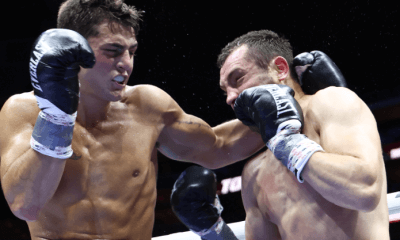
 Featured Articles3 weeks ago
Featured Articles3 weeks agoVito Mielnicki Jr Whitewashes Kamil Gardzielik Before the Home Folks in Newark
-
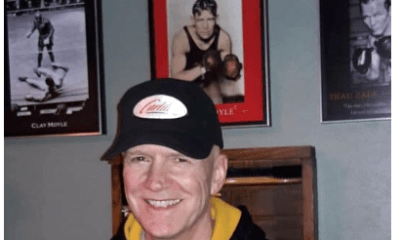
 Featured Articles4 weeks ago
Featured Articles4 weeks agoCatching Up with Clay Moyle Who Talks About His Massive Collection of Boxing Books
-
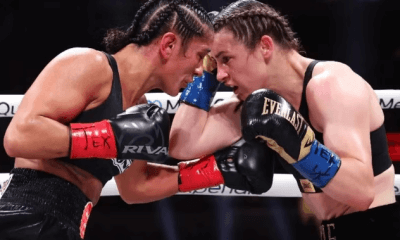
 Featured Articles6 hours ago
Featured Articles6 hours agoResults and Recaps from New York Where Taylor Edged Serrano Once Again
-
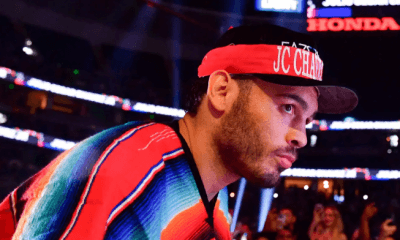
 Featured Articles5 days ago
Featured Articles5 days agoFrom a Sympathetic Figure to a Pariah: The Travails of Julio Cesar Chavez Jr
-
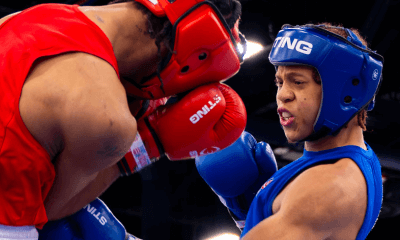
 Featured Articles3 weeks ago
Featured Articles3 weeks agoMore Medals for Hawaii’s Patricio Family at the USA Boxing Summer Festival
-
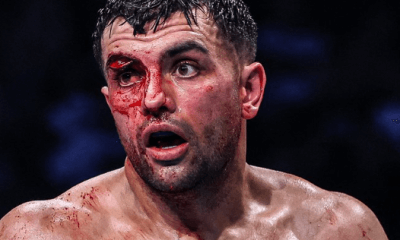
 Featured Articles7 days ago
Featured Articles7 days agoCatterall vs Eubank Ends Prematurely; Catterall Wins a Technical Decision
-
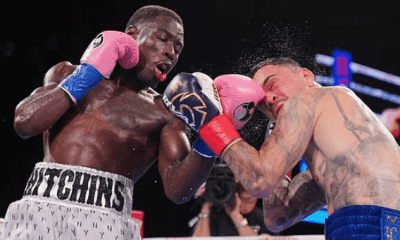
 Featured Articles4 weeks ago
Featured Articles4 weeks agoRichardson Hitchins Batters and Stops George Kambosos at Madison Square Garden

















